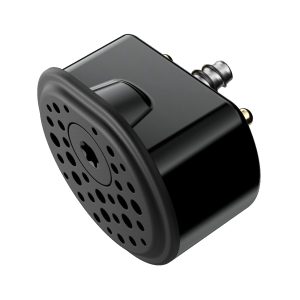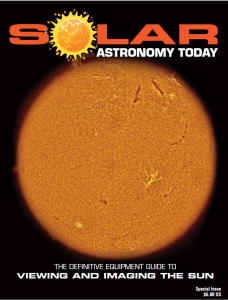The Vespera Hygrometer Sensor from Vaonis helps battle fogging, which is one of the many enemies of amateur astronomers. In a cold or humid environment, droplets and fog can form on the lens of telescopes and cameras, affecting both the quality of observation and photos. Vespera’s anti-fog system will activate when a certain temperature and humidity threshold is reached. Heat generated continuously around the lens will remove the fog, creating better viewing conditions and sharper pictures.
 The Vespera Hygrometer Sensor is an intelligent accessory for Vaonis’ Vespera observing station that measures the temperature and humidity threshold of your environment at which fogging occurs on the lens. It is ideal for people living in a humid region (sea, ocean, river, lakes, ponds, etc.) or in a region where temperatures are cold. The sensor is also great in winter when temperatures are close to 0° Celsius.
The Vespera Hygrometer Sensor is an intelligent accessory for Vaonis’ Vespera observing station that measures the temperature and humidity threshold of your environment at which fogging occurs on the lens. It is ideal for people living in a humid region (sea, ocean, river, lakes, ponds, etc.) or in a region where temperatures are cold. The sensor is also great in winter when temperatures are close to 0° Celsius.
The Vespera’s integral demister will activate when a certain temperature and humidity threshold is reached. Heat generated continuously around the lens will remove the fog, creating better viewing conditions and sharper pictures. The hygrometer and the associated demisting system will improve both your observation and your photos.
The Vespera Hygrometer Sensor offers a discreet design as the Vaonis team notes, “Measuring under 13mm, the hygrometer is equipped with an electronic board which is the smallest board our expert engineers have ever designed. The sensor fits discreetly into Vespera’s optical arm and is compatible with the use of filters. It will automatically turn the anti-fog system on and off, so you never have to worry about it.”
You can learn more about the Vespera Hygrometer Sensor here.

 And to make it easier for you to get the most extensive news, articles and reviews that are only available in the magazine pages of Astronomy Technology Today, we are offering a 1-year magazine subscription for only $6! Or, for an even better deal, we are offering 2 years for only $9. Click here to get these deals which only will be available for a very limited time. You can also check out a free sample issue here.
And to make it easier for you to get the most extensive news, articles and reviews that are only available in the magazine pages of Astronomy Technology Today, we are offering a 1-year magazine subscription for only $6! Or, for an even better deal, we are offering 2 years for only $9. Click here to get these deals which only will be available for a very limited time. You can also check out a free sample issue here.
The Sun is more active than it has been in years! If you’d like to learn more about the technology behind solar observing, solar imaging and more, you can check out our free publication, “The Definitive Guide to Viewing and Imaging the Sun”. You don’t have to sign up or provide any information, simply click here and enjoy reading!

